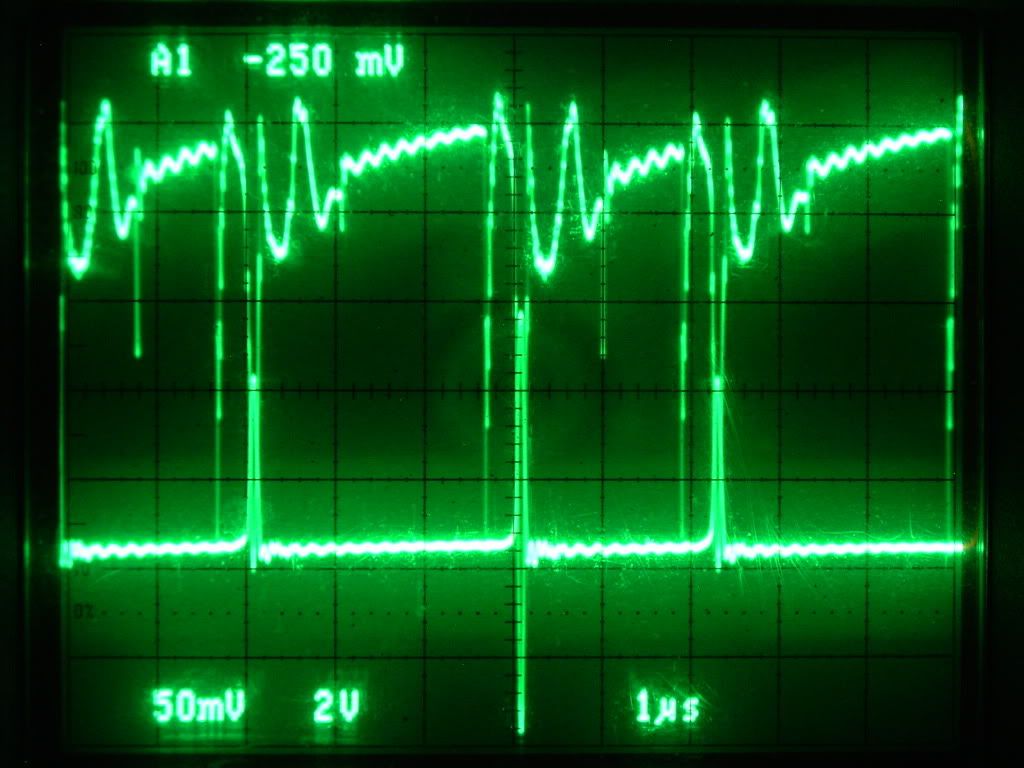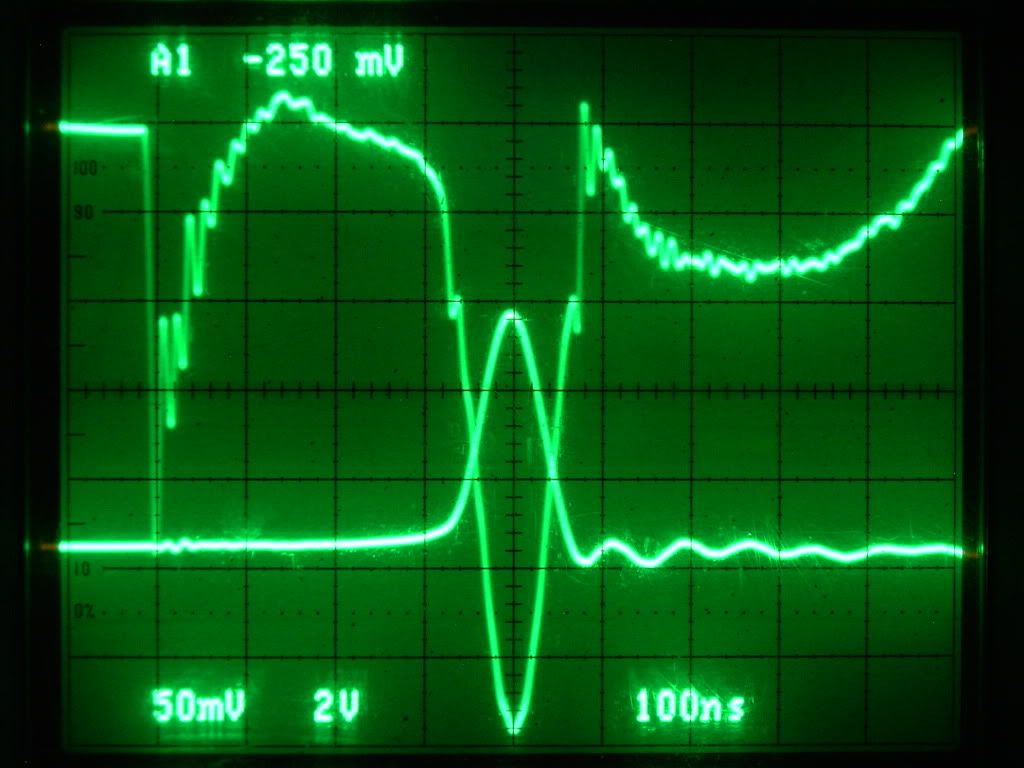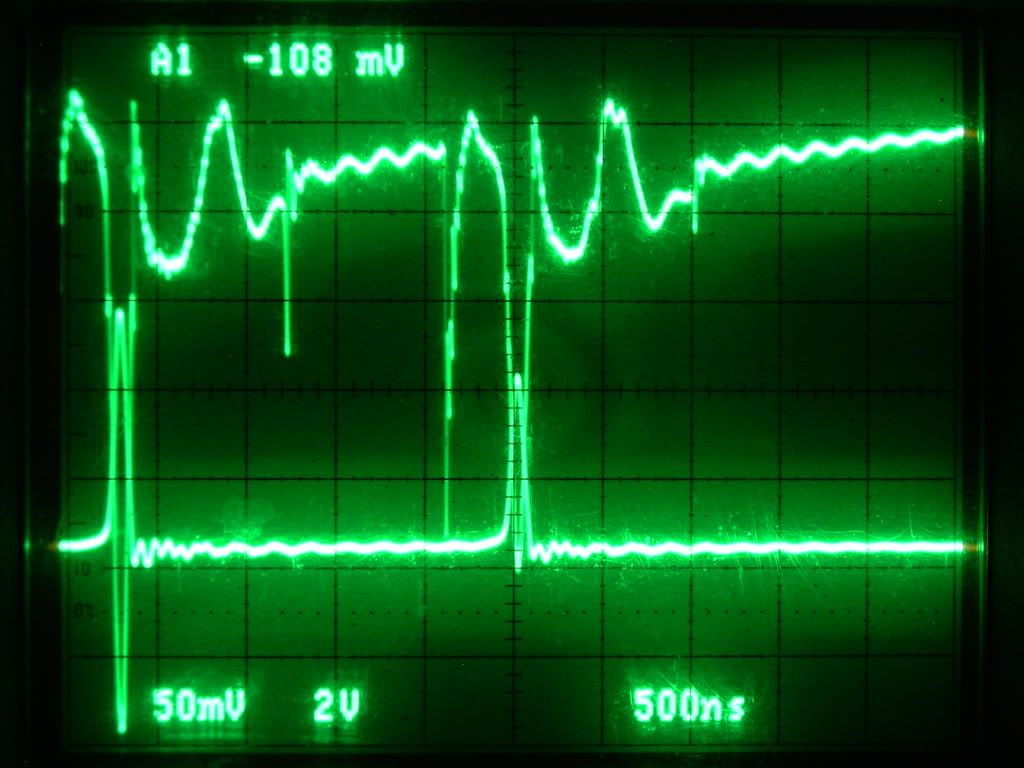Hi All,
It has been a long day for me, but I did want to post up the results for the Battery Power Averages for the last 21 sample files:
I think it is important at this point to mention the level of precision involved. As the time base is reduced the precision increases. The 40Ás/div data is only accurate to TWO decimal places even though my calcs are carried out to 9. For example, hour 2, 40Ás above should be read as no more accurate than -5.24V AVG
I do not have the original CSV files, but instead I have the XLR files that Glen uploaded for the 2Ás & 20Ás data. I need to check with him on the actual precision for those data dumps.
The wide variance in average voltage between dumps in the same hour points to missing data in between the collection times and I have asked for at least one hour to be taken at 1/10th HR increments (6min). We may have to keep increasing this resolution until we can establish with confidence, the limits of the deviations above and below zero.
The preliminary treatment of this data indicates that out of 21 different sample sets comprised of 10000 individual samples for each set, with a time period of 2, 20 and 40 microseconds respectively, the battery delivery power is negative 90.5% of the time on the average.
Time was spent to ensure that the method of averaging was an accurate means of integrating the data. Because of the varied waveform the integration must be approximate because the y function would be too complex to consider within the scope of this endeavor. However, the Midpoint Rule seems adequate where each sample voltage represents the y value at midpoint. The difference between an actual area integration and the general averaging was negligible in the one sample I did over Aarons similar data. Readers with more accurate integration tools may wish to import the data and verify that this is the case. It is undetermined whether or not another rule, such as the Trapezoidal rule, could be a more accurate method of integrating this particular complex waveform.
When baselines are established for these resistors that give us a means to compare the caloric values to the power needed to produce those values, then we will be in position to compare these battery readings to the output power. A cursory approach on a single sample intimated that the load resistor is operating at a total impedance of ~23.33 ohms with a 90░ phase shift in current. This arrangement allows a voltage spike of 522V to produce a negative battery power of 358.4W (See Row 18 of Hour 1 20Ás - The current is considered shifted to 90░ lag at row 23)
It should be noted, that the average battery voltage seems to decline over the seven hour period by a small amount. It is noteworthy that if the events were truly negative throughout the entire period 90.5% of the time, the battery should recharge instead of discharging. I am willing to accept that there may be extenuating circumstances in this circuit that prevent this from happening in some way. I am encouraged by the repeatability of this effect in 3 different locations.
It may be necessary, to provide an external HDD to be used for realtime data dumps at close resolutions during a 1 hour run. I don't know if the equipment in use can provide that seamless flow or not. As we close in on this tighter, it does appear that the efficiency of this circuit is quite high.

It has been a long day for me, but I did want to post up the results for the Battery Power Averages for the last 21 sample files:
Code:
Battery Power AVG Hour 2Ás 20Ás 40Ás 1 1.514827571 -2.479456000 1.500064000 2 -3.205999153 -4.045888000 -5.239488000 3 -5.533148312 -5.207520000 -1.636576000 4 -2.350759808 -1.969696000 -3.160768000 5 -2.070294717 -3.493984000 -4.054848000 6 -1.257904431 -4.098176000 -2.052608000 7 -2.550643907 -4.765152000 -3.565344000 AVG -2.207703251 -3.722838857 -2.601366857
I do not have the original CSV files, but instead I have the XLR files that Glen uploaded for the 2Ás & 20Ás data. I need to check with him on the actual precision for those data dumps.
The wide variance in average voltage between dumps in the same hour points to missing data in between the collection times and I have asked for at least one hour to be taken at 1/10th HR increments (6min). We may have to keep increasing this resolution until we can establish with confidence, the limits of the deviations above and below zero.
The preliminary treatment of this data indicates that out of 21 different sample sets comprised of 10000 individual samples for each set, with a time period of 2, 20 and 40 microseconds respectively, the battery delivery power is negative 90.5% of the time on the average.
Time was spent to ensure that the method of averaging was an accurate means of integrating the data. Because of the varied waveform the integration must be approximate because the y function would be too complex to consider within the scope of this endeavor. However, the Midpoint Rule seems adequate where each sample voltage represents the y value at midpoint. The difference between an actual area integration and the general averaging was negligible in the one sample I did over Aarons similar data. Readers with more accurate integration tools may wish to import the data and verify that this is the case. It is undetermined whether or not another rule, such as the Trapezoidal rule, could be a more accurate method of integrating this particular complex waveform.
When baselines are established for these resistors that give us a means to compare the caloric values to the power needed to produce those values, then we will be in position to compare these battery readings to the output power. A cursory approach on a single sample intimated that the load resistor is operating at a total impedance of ~23.33 ohms with a 90░ phase shift in current. This arrangement allows a voltage spike of 522V to produce a negative battery power of 358.4W (See Row 18 of Hour 1 20Ás - The current is considered shifted to 90░ lag at row 23)
It should be noted, that the average battery voltage seems to decline over the seven hour period by a small amount. It is noteworthy that if the events were truly negative throughout the entire period 90.5% of the time, the battery should recharge instead of discharging. I am willing to accept that there may be extenuating circumstances in this circuit that prevent this from happening in some way. I am encouraged by the repeatability of this effect in 3 different locations.
It may be necessary, to provide an external HDD to be used for realtime data dumps at close resolutions during a 1 hour run. I don't know if the equipment in use can provide that seamless flow or not. As we close in on this tighter, it does appear that the efficiency of this circuit is quite high.

 Am preserving all your hard work so every one does not get tired fingers
Am preserving all your hard work so every one does not get tired fingers  Thanks so much Aaron Harvey and Glen.
Thanks so much Aaron Harvey and Glen.







 , i just try to pitch in my part and consider my self equal like ever one working together, its addictive being a community
, i just try to pitch in my part and consider my self equal like ever one working together, its addictive being a community  We are almost onto winding Glen's inductor for some more tests. Sorry we have not been able to contribute much technical but rest assured when we get the Inductor done can do a whole bunch of tests for all.
We are almost onto winding Glen's inductor for some more tests. Sorry we have not been able to contribute much technical but rest assured when we get the Inductor done can do a whole bunch of tests for all.












Comment